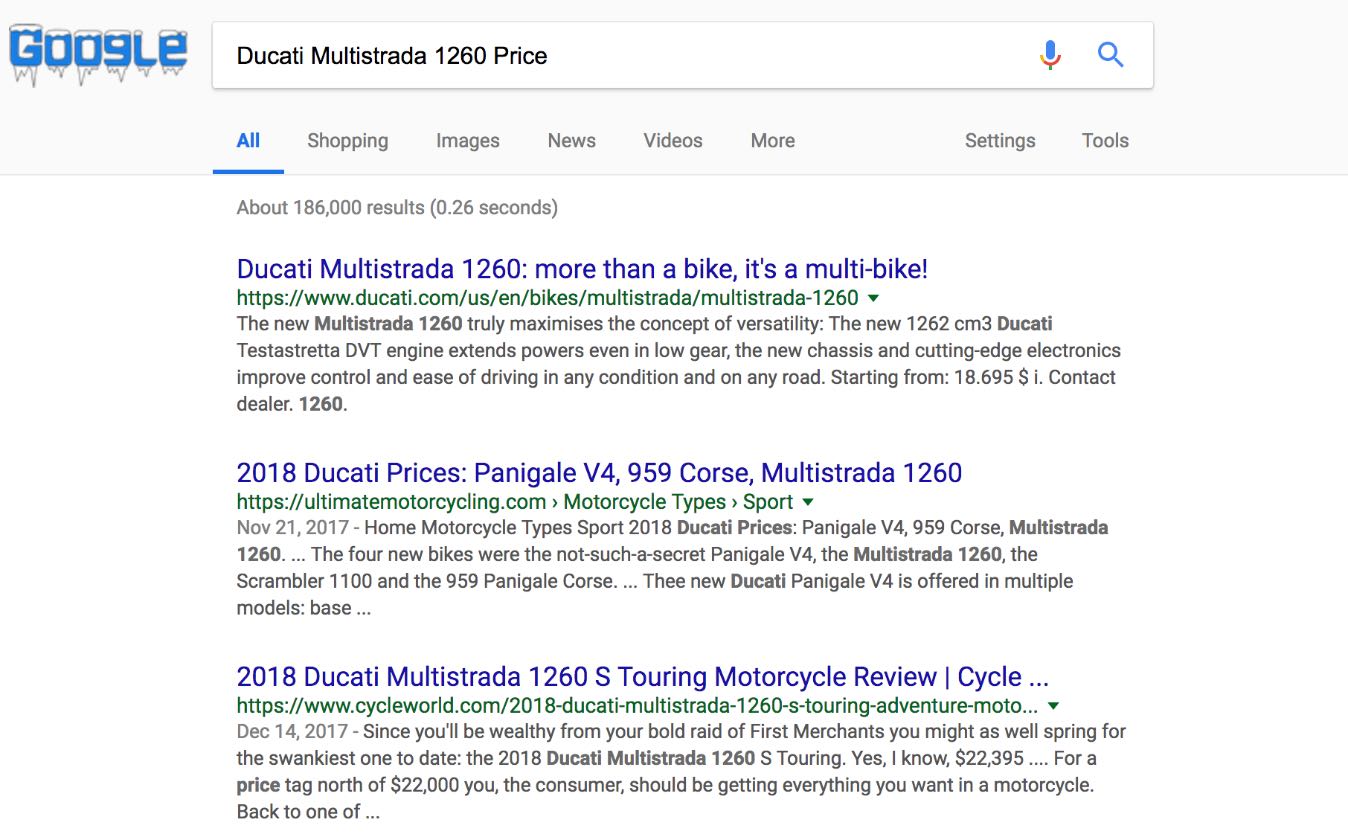Many agencies continue to believe that SEO writing revolves around one process: inserting keywords into page tags and the body of text itself.
This belief remains strong, although it’s 2018 and the quality and relevance of content have more proverbial weight than a few keywords in the title or heading tags.
According to a recent Searchmetrics General Ranking Factors study of Google, overall content relevance was more of a ranking factor than word count, or keywords in the text body, description title, or H1 tag.
Because agencies are naturally focused on the art of SEO itself, they forget about the art of writing.
True success – for search engine rankings, user experience, and the brand overall, whether personal or business – occurs when both the art of SEO and the art of writing are combined.
Neither can survive alone.
This concept is not as simple as many agencies perceive.
Writers are either trained in traditional discipline or the digital discipline. Most agencies have one or the other; find one with both and the proverbial Holy Grail happens.

From experience, I get it. I’ve extensively worked and trained in both disciplines, from spending endless evenings chasing stories as a news reporter back when Google was in its infancy, to cranking out 25 blogs in a week that were part of a keyword-themed strategy for a website.
Fast-forward to 2018, and I’ve ghostwritten nearly 500 articles for multiple CEOs and helped build their personal and business brands around keywords that were positive to their respective industries. I’ve also written over 14,000 articles, stories, and product copy for various online publications.
Let’s reiterate – SEO is a must for any online writing, especially from a keyword perspective, and correctly mapping those keywords to pages/posts. I’d say “strategically,” but that word needs to go.
Strategy is more than just keyword research and fill in the blanks with some content; strategy also needs to imply creation of quality content that is relevant to the audience.
Readers can recognize an authoritative voice immediately, and a fake voice even quicker, especially in 2018. This does zilch for conversions or brand awareness, something I’ve learned during nearly two decades of studying both the art of writing and the art of SEO.
With that said, here are the top 47 writing tips for any content writer within any type of company, from billion-dollar software designers to local pizza joints. The focus weighs more towards the art of writing itself, which will naturally led to the creation of quality content that search engines demand.
Writing for SEO: The Essentials
1. Think Keywords First
Your writing must be found before you’ll have any impact.
No matter how intelligent they become, search engine algorithms can’t recognize the best voice in a piece of writing…but if keywords are there, you’ll have the opportunity of being heard.
2. Approach Keyword Research Like an Art
There are thousands of keyword research articles available; research, discover and test what works best for you.
Make this process cyclical; I build content calendars out in three-month segments, performing fresh keyword research at the beginning of every cycle.
Industries change, and new keywords trend quicker than you’d know.
3. Study the Competition for Keywords
Multiple tools are available to find competitor keywords.
Warning: ONLY steal keywords; don’t study the actual writing of your competitors. Once you do that, you sound like them, and struggle to create anything original.
Study keywords – not actual content – of your competitors. Create an original voice and you’ll be heard.
4. Target 1 or 2 Keywords for Each Page or Blog (Except Homepage)
Always focus on broader terms for you main “parent” pages and longer term for the “child” pages below.
5. Use Keywords Where They Matter Most
To send search engines strong signals of the content’s intent, it’s vital to use your keyword in the following (prioritized of importance):
- Title tag
- Internal links within content
- Alt attribute of image
- Headline tags (always have an H1!)
- Meta description

6. Use Bold & Bullet Points Wherever Possible
Google pays attention to these, including when awarding featured snippets.
So make sure to use target keywords in bold and bullet points when possible.
7. The Title Tag: Still the Most Powerful Element
Make sure your target keyword is part of the title tag, ideally toward the front.
Also, remember that title tags should be about 60 characters, so put as much time into this as your actual content creation.
For the homepage title tag, target three of the most important keywords that describe the business/website.
Always think about storytelling. Keep it simple. Speak the language of your target audience.
8. Add Related Keywords
Don’t simply stuff keywords in after doing the writing.
If you’re well prepared with keyword research, have the list of semantically connected keywords in view as you write.
Insert related keywords naturally.
9. Use Your Target Keyword in Your Meta Description.
Google says it doesn’t use the meta description as a ranking factor.
However, if someone is searching for that target keyword or phrase, those words will be bold:

Bolding attracts the eyes – and might entice a searcher to click rather than scroll by.
Write your meta description like ad copy.
Writing for SEO: Craft & Routine
10. Write Drunk, Edit Sober
This sentiment is paraphrased from Hemingway. This doesn’t mean you have to drink booze and edit a day (or so) later. But you must create a mood to get words flowing in a natural way that both readers and search engines crave.
Meditation works for some; simply riding around in a car or a motorcycle works for others.
My thing personally – when motorcycles are garaged due to snow – is when wifey and child head to sleep and I relax with music and a glass of red (or three). It’s all up to writer preference.
The solution for everyone is simple: worry about writing and get thoughts out before thinking.
Sounds weird? Try it. Then edit when fully focused.
11. Write. Rewrite. Then Rewrite Again. Until It’s Right.
It’s all about a routine and process.
As William Zinsser says in “Writing to Learn”: “Only by repeated applications of the process — writing and rewriting and pruning and shaping — can we hammer out clear and simple product.”
12. Outline and Plan
It’s much easier for a mind to think, and a search engine to read, in chunks, and actually see those chunks coherently.
Most minds naturally want to write in a stream of consciousness style like Jack Kerouac – but this isn’t novel writing; most of us are writing for a business and that business’s success.
Organize headlines (for SEO with keywords!) and fill in the gaps.
Sometimes those headlines are more important than the words beneath. Make those headlines scream thoughts, and the words shout to support those screams.
13. Write Sentence by Sentence
Set up Word or Google Pages in landscape for the first draft, and write sentence by sentence. Don’t write any paragraphs until you do your first rounds of edits.
I learned this tip from Charles Euchner, author of “The Elements of Writing”.
Single-line sentences keep the mind fresh. They’ll help corral thoughts as you begin editing.
Think short for every sentence – like a 140-character tweet – and embrace short and concise writing.
14. Write Daily
A muscle grows when it has endless input combined with correlating relaxing points.
Your mind works that same way; embrace it.
Again, write daily to work out the writing muscles, followed by some relaxing.
Never stop the growth of writing muscles.
15. Shut Your Wi-Fi Off
This tip comes from Tim Ferriss, author of “The 4-Hour Workweek”.
This simple practice keeps focus in place and the mind from answering anything that’s not in the mindset of your focus.
Distractions move a mood. Make those distractions non-existent.
16. Got Questions? Ask Your Digital Assistant
The Wi-Fi may be off, but sometimes you need immediate answers to questions that will nag you. Some can’t work without answering questions.
The solution is simple: ask Siri or Alexa.
I keep an Amazon Echo Dot next to my desk and use it for quick research. I have an Echo Show, but it doesn’t belong in the office where it can quickly jack your focus due to the video factor. That one remains downstairs, out of the office.
17. Read All You Can
Especially read the writers who simplify everything.
People may or may not love Hunter S. Thompson due to his politics or mad lifestyle, but his prose is crisp and simple. I read “Fear and Loathing in Las Vegas” in one sitting. Not once, but maybe 10 times when I needed a push into something I couldn’t possibly finish and needed a mind breath.
If you’re business minded, Michael Gerber’s “The E-Myth” is a one-sitting read also. Simple and informative.
18. Stop Waiting for Inspiration
It’s useless.
There’s no such thing as inspiration unless you like to talk about writing instead of writing.
True writers write every day and make it a lifestyle that helps develop the “art.” Practice makes stuff happen, and takes discipline.
Words simply flow better and easier after practice and discipline. Nothing happens without the simplicity of practice.
19. Read the Essentials
For traditional writing, read William Zinsser’s “On Writing Well”. Don’t just read it once. Reread it once a year.
For the digital age of “short” writing that makes an impact, read Roy Peter Clark’s “How to Write Short”.
20. Try Writing in Longhand
This article is based on notes I took while flying over the Atlantic Ocean en route to Valencia, Spain.
Flying is a great time for thinking and using longhand. Plus, it keeps your mind off the snoring passenger next to you.
Write in longhand in cabs, buses, middle of meetings, etc. Try it, and revisit those notes before typing anything.
21. Write About What You Love
To truly master the craft of the written word, embrace writing that makes you happy – regardless if it’ll make you money. The more you write, the better you’ll become.
Take notes daily of things that make you question intent, such as a “For Sale” sign I say that said “Blue Ball Living Has It All.” Short writing provides inspiration (regardless of how absurd sometimes!).
22. Ask Questions Daily
Friends, family, wife, children, whoever. Continually ask questions.
The more you learn, the more you can provide readers (possible prospects in business), regardless of your industry.
Questions are the highlights of learning. Let people talk.
Think 80/20 – let others talk 80 percent of the time as you listen, and talk the other 20 percent of the time.
Your writing will thank you one day (and so will the clients you write for).
23. Know Your Audience & Write for Them
Remember to keep your voice and style the same.
That’s how to set yourself apart from the zillions of other content writers out there.
24. Work Better Under Deadline?
For some people, the pressure of a deadline forces the creativity out of you.
If this is true for you, have project managers bump up your due dates.
I do this with my teams by sometimes as far ahead as four weeks.
25. Think Like a Journalist
Ask the 5Ws – who, what, when, where, why – and, most importantly, how.
Your client’s content depends on it.
26. Never Cram all 5Ws and How into One Paragraph
Not only will this present clutter to the reader, but search engines can see this as spammy and keyword stuffed. Write so the flow is natural.
27. Build Your Work Around Questions
Always ask what’s the problem and how do I clearly provide a solution to that problem.
As importantly ask, will readers care?
This will help keep your voice trustworthy and authoritative, keeping search engines and readers happy.
28. Don’t Just Appeal to Sight
Also try to appeal to other senses, such as smell, sound, touch, and taste.
Try to appeal to all five senses in every piece of content you create.
29. When Writing, Think Like a Camera
Provide input from aerial views, up close, in the middle of it all, and behind the scenes.
Let your audience experience the moment, and not just read about it.
30. Split Long Projects Into Short Tasks
Write all headlines first (remember to use target keywords in them), and fill in each portion.
This works if you’re writing a 2,500-word piece on the craft of writing, or a 750-piece for a client discussing technical aspects of a product.
31. Always Have an Ending in Mind
Knowing where your content is leading will keep your writing focus sharp, and will help you more often achieve the ultimate goal of most online writing – a conversion.
32. Check Your Spelling & Grammar
Misspell a name and the article immediately loses credibility.
Craft your content with sloppy grammar, and the article loses credibility.
After you’ve checked for spelling and grammar errors, check again.
33. Think of Credibility to Your Brand as a Keyword to SEO
Without credibility, you’ll lose any chance of capturing an audience’s attention.
Situations get worse if you spread false facts.
Take added time for research and fact-checking.
34. Edit With the 10-Second Rule in Mind
This goes for every single paragraph, especially for the first paragraph and meta description. You want to immediately grab the reader’s attention, and keep that attention.
Also think – is this article worthy of additional conversation? If so, and you have proper CTAs within an article, this can help move readers one step closer to conversion.
Writing for SEO: Form
35. Write Strong Sentences & Paragraphs
The strongest words should begin and end a sentence.
The strongest sentences should appear at the end and beginning of a paragraph.
This helps keep the slower material in the middle of a sentence, and the most important thoughts before the reader.
36. Become Obsessed About Clarity of Voice
Clean writing reflects a clear mindset – something people (clients!) need.
37. Keep Writing Free of Clutter
Keep it simple.
Get straight to what you’re saying.
Strip all useless words.
Get sentences into their simplest form.
38. Beware of Excess Adverbs & Adjectives
If the verb or noun can’t perform the explanation, that verb or noun isn’t strong enough.
39. Use a variety of long and short sentences
A variety of sentence lengths helps your content to create some rhythm.
Readers enjoy this.
40. Short Paragraphs Allow the Mind to Breathe
Use short paragraphs often.
Space between paragraphs psychologically takes less energy to read, saving that prospect’s energy for the sales/lead.
41. Always Use Active Verbs
This sentence was imperative with “Use.”
Without active verbs, the mind shifts.
The mind wanders.
You lose an audience…or sale.
42. Avoid Clichés
Um, like the plague.
You feel that one?
Writing for SEO: Favorite Hacks
43. Listen to Your Favorite Music
Why not write to it? Some forms of music will bring drastically different emotions out on the page before you’d realize it, so the more the better.
While writing this, I went from Coltrane to Infected Mushroom to Hendrix to SRV to G n’ R to Breaking Benjamin to Chopin.
For editing, Miles Davis was my go-to.
Music can help words flow, so embrace it all.
44. Commit to the Most Serious Writing in the Morning
I’m typically up by 5:30 a.m.
That’s when my brain is freshest.
I always block a few hours every morning for my most serious writing.
45. Carry a Tablet to Jot Down Ideas
If you think clearer in longhand, carry a small tablet for jotting down ideas over using your phone.
Moleskin tablets are my favorite because they are thin and fit into books, which I always have with me when traveling.
There’s only so much marginal space within a book for ideas; a tablet takes care of this and keeps you off the phone.
46. For Clients: Think 80/20 for the Initial Few Engagements
Focus on the 20 percent of your writing that will produce 80 percent results for the client’s sales.
How?
Simple: always begin a content strategy around the top ROI products. This shows value, and will help contribute to the overall qualified keywords you want them to want to rank for.
47. Remember to Get Away from it All
The writers that have the true minds to create and provide value to clients always need a break.
One of my process weekly tactics is “half-day Wednesday.” I detune and either play guitar, hike, ride motorcycles…basically whatever is needed.
This mid-week break keeps the mind fresh and clear, which translates into positive workflow and, ultimately, happy clients.
Conclusion
The perfect solution to create content that leads to conversion in 2018 involves deep studies not only in the art of SEO, but also in the art of writing. Once both of these arts combine, digital organisms happen.
Embrace both if you’re serious about providing the most value to your readers or your client’s readers, which you naturally want to turn from prospects to customers.
Also remember if the content appeals, it will only compound online over time. Think of SEO writing to a business as compounding interest to an investor – have the patience and discipline to do it correctly, and the results should continually speak for themselves.
Subscribe to SEJ
Get our daily newsletter from SEJ’s Founder Loren Baker about the latest news in the industry!

